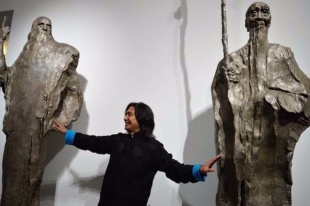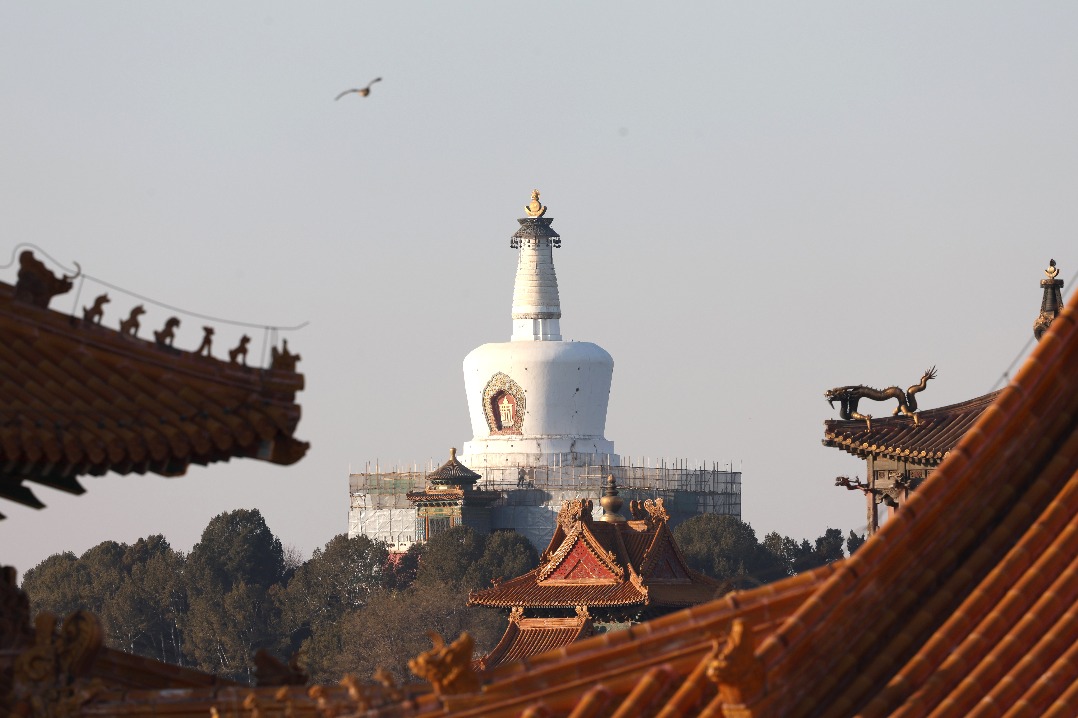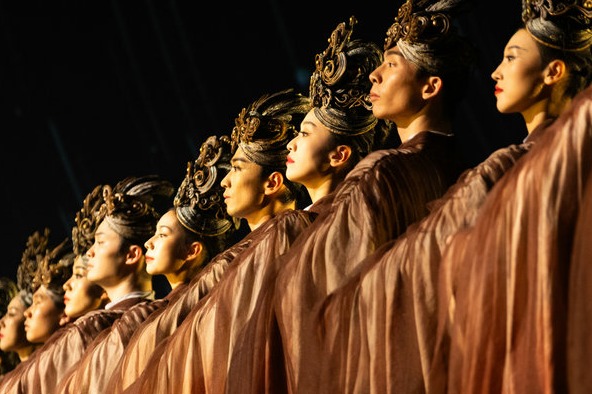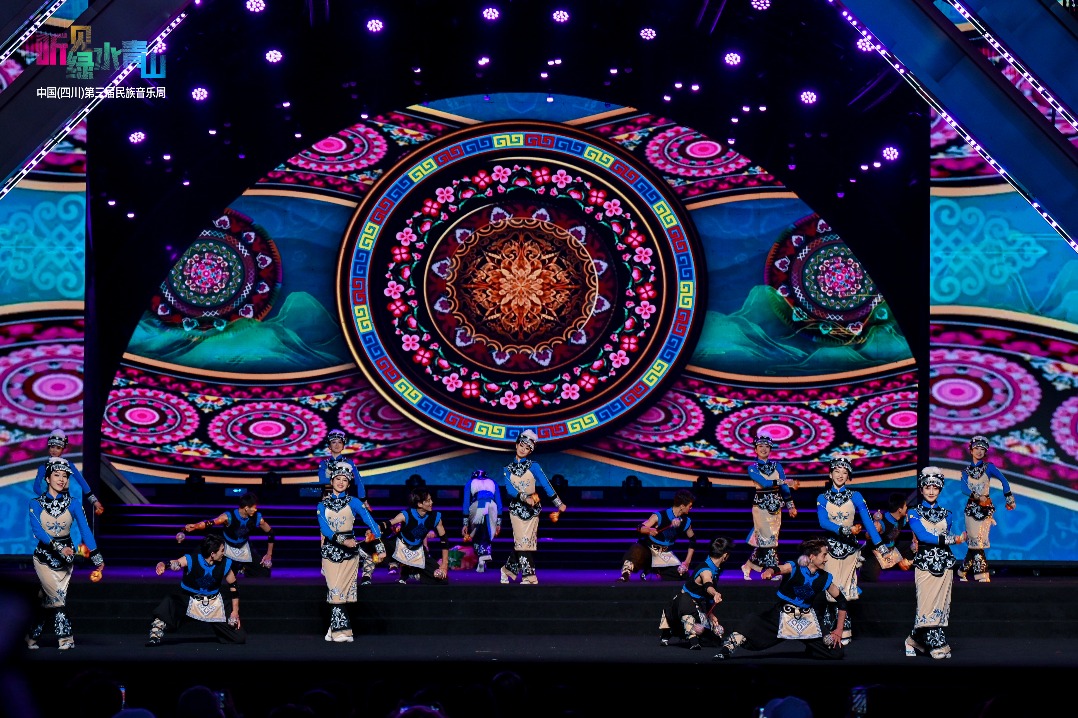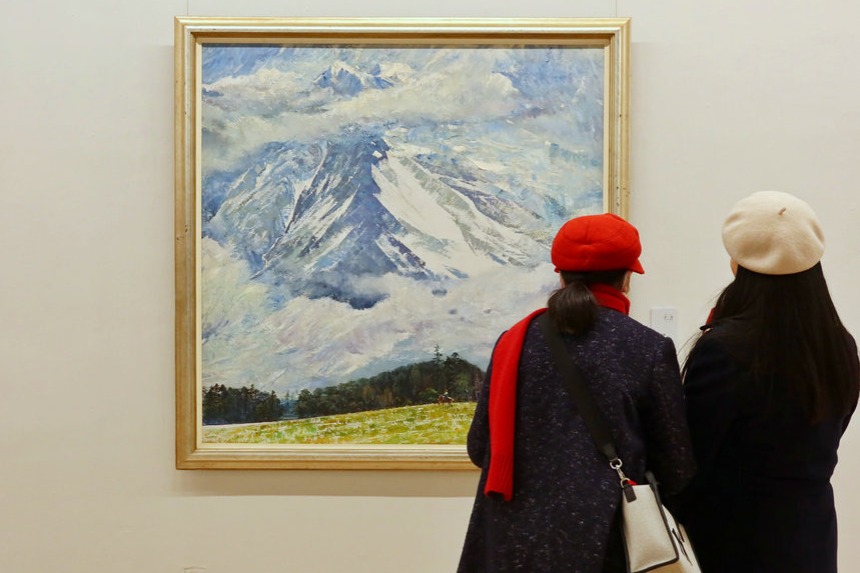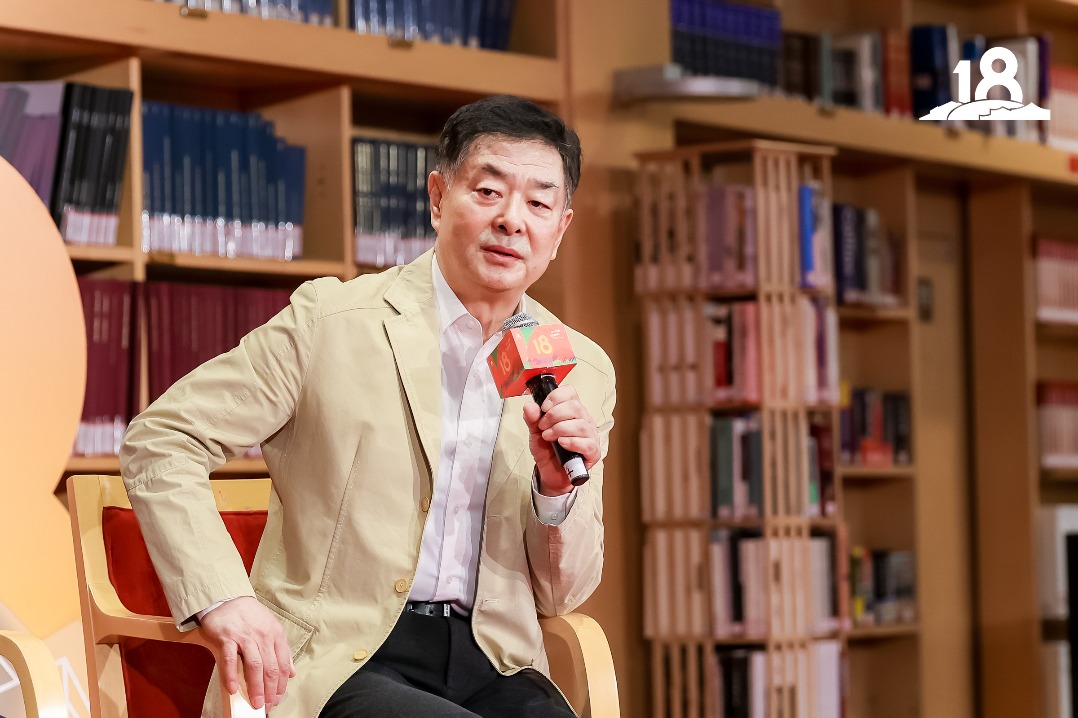'Wisdom in the hands' bridges Chinese and Western cultures

How does one depict interaction between Chinese and Western cultures? Sculptor Wu Weishan had an idea: juxtaposing Qi Baishi and Leonardo da Vinci.
One of his signature works features statues of Qi and da Vinci standing beside each other, with the Chinese painter holding an oversized cane and da Vinci's index finger pointing at the sky.
"Despite their different ways of expression, the artists both devoted their lives to seeking the truth of beauty and human emotions. It makes perfect sense they could have a conversation across time and space," Wu said.
The work, on permanent exhibition at the National Museum in Rome, Italy, offers an example of Wu's career-long exploration of relations between Chinese and Western cultures and his attempts to bridge the two using "the wisdom in the hands," a praise from former United Nations Secretary-General Ban Ki-moon.
"Geographical and racial differences may set us apart culturally, but deep down, people around the world share the same quest for betterment, virtue, and beauty," said Wu, 56, who is also director of National Art Museum of China.
Over the past twenty years, Wu has created more than 500 sculptures of historical and cultural figures from around the world. His works have earned him numerous international awards, including the prestigious Pangolin Award from the Royal British Society of Sculptors in 2003.
"I have a single criterion for choosing the subjects of my work: they all have contributed to civilization," he said.
Wu, also a member of National Committee of the Chinese People's Political Consultative Conference (CPPCC), has put forward many proposals on cultural issues to the country's policymakers, including one advocating a more open mind in China's cultural interactions with the world.
"We often talk about cultural confidence today, but it doesn't mean we should cling to our past and stay complacent. Instead, we should embrace different cultures and try to create new artistic languages through interactions and exchanges," he said.
However, Wu has also been a long-time critic of cultural appeasement in some of China's contemporary art scenes.
There has been an inclination among some Chinese artists who always try to please the West by uglifying the Chinese people, he said in a discussion on the sidelines of the ongoing CPPCC annual meeting, adding that "this has led the world to misunderstand China."
For his part, Wu has been striving to promote Chinese classical artworks in the world, and was granted the title of "Goodwill Ambassador for China Voices" by the State Council, China's cabinet, in 2016.
"China's traditional values and thinking, especially the spirit of poetry that celebrates romanticism, are well-received worldwide," he said.


